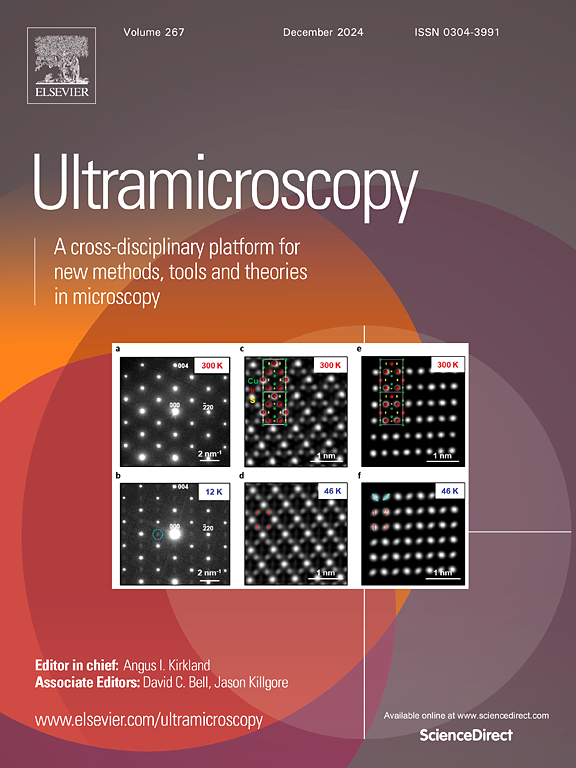A comparison of energy dispersive spectroscopy in transmission scanning electron microscopy with scanning transmission electron microscopy
IF 2
3区 工程技术
Q2 MICROSCOPY
引用次数: 0
Abstract
The objective of this work was to explore the capabilities of a field emission gun scanning electron microscope (FEG-SEM) equipped with a transmission scanning electron detector (TSEM) and energy dispersive spectroscopy (EDS) to identify nanoscale chemical heterogeneities in a gas atomization reaction synthesis (GARS) steel sample. The results of this analysis were compared to the same study conducted with scanning transmission electron microscopy (STEM) with EDS mapping. TSEM-EDS was performed using the standard spectral analysis approach, i.e., pixel-by-pixel identification of elements from the spectra, and a new principal component analysis approach to detect regions of similar spectra before identifying elemental contributions to each spectrum. It was determined that features over 200 nm were detectable with the TSEM-EDS standard spectra analysis technique but the PCA analysis approach was necessary for observing smaller features that contained trace elements. Monte Carlo simulations indicated that the spatial resolution expected from a 150 nm thick foil was consistent with those observed in experimental analysis. Simulations also confirm that thinner samples enable higher spatial resolution scans although smaller interaction volumes may require longer acquisition times.
透射扫描电镜与扫描透射电镜能量色散谱的比较。
本工作的目的是探索配备透射扫描电子探测器(TSEM)和能量色散光谱(EDS)的场发射枪扫描电子显微镜(fg - sem)识别气体雾化反应合成(GARS)钢样品中纳米级化学非均质性的能力。该分析结果与扫描透射电子显微镜(STEM)进行的相同研究进行了比较。sem - eds采用标准的光谱分析方法,即逐像素识别光谱中的元素,并采用新的主成分分析方法检测相似光谱的区域,然后确定元素对每个光谱的贡献。结果表明,扫描电镜-能谱分析技术可以检测到200 nm以上的特征,但要观察含有微量元素的较小特征,则需要主成分分析方法。蒙特卡罗模拟表明,从150nm厚的箔片上得到的空间分辨率与实验分析结果一致。模拟还证实,尽管较小的相互作用体积可能需要更长的采集时间,但更薄的样品可以实现更高的空间分辨率扫描。
本文章由计算机程序翻译,如有差异,请以英文原文为准。
求助全文
约1分钟内获得全文
求助全文
来源期刊

Ultramicroscopy
工程技术-显微镜技术
CiteScore
4.60
自引率
13.60%
发文量
117
审稿时长
5.3 months
期刊介绍:
Ultramicroscopy is an established journal that provides a forum for the publication of original research papers, invited reviews and rapid communications. The scope of Ultramicroscopy is to describe advances in instrumentation, methods and theory related to all modes of microscopical imaging, diffraction and spectroscopy in the life and physical sciences.
 求助内容:
求助内容: 应助结果提醒方式:
应助结果提醒方式:


